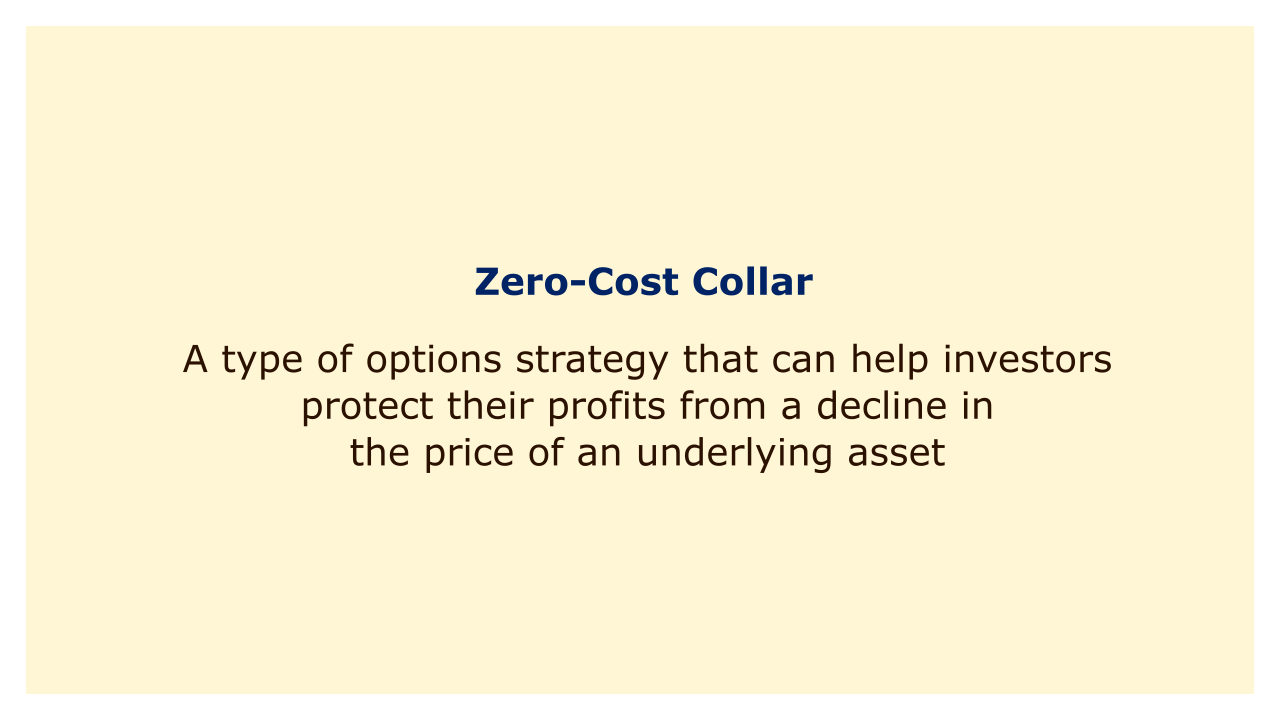 |
| Image: Moneybestpal.com |
A zero-cost collar is a type of options strategy that can help investors protect their profits from a decline in the price of an underlying asset. The process entails purchasing a put option and offering a call option with the same expiration date but different strike prices.
The premiums for the call and put options are equal, hence there is no net cost to the strategy because the premiums for each option were paid in equal amounts.
Let's look at an example to demonstrate how a zero-cost collar functions. Consider a shareholder who has 100 shares of XYZ stock, which is now priced at $50 a share. Although the investor is bullish on XYZ, they nevertheless wish to safeguard their gains from a potential market decline. They make the decision to put in place a zero-cost collar by purchasing a put option with a $45 strike price and selling a call option with a $55 strike price, both of which expire in six months. The strategy has a net cost of zero because the put option is $2 per share expensive and the call option profitable.
If the price of XYZ stock increases over $55 at expiration, the investor will be forced to sell their shares at $55, which is less than the market price. In spite of any commissions or other costs, they will still turn a $5 per share profit. The investor will use their put option to sell their shares for $45, which is more than the market price, in the event that the XYZ stock declines below $45 by expiration. Besides any commissions or costs, they will lose $5 per share. Both options will expire worthless and the investor will keep his or her shares if the price of XYZ stock remains between $45 and $55 at expiration.
Investors who want to hedge their exposure to a certain asset without having to pay any money up front can benefit from using a zero-cost collar. However, it also lessens their potential returns and might not be appropriate in every circumstance.
A zero-cost collar's advantage is that it reduces the downside risk of retaining the underlying asset while still allowing for some gain potential. The disadvantage is that since the investor must sell the asset at the call option's strike price in the event it is exercised, it also reduces the maximum profit that can be gained from the asset's price increase.
Let's look at an example to demonstrate how a zero-cost collar functions. Consider a shareholder who has 100 shares of XYZ stock, which is now priced at $50 a share. Although the investor is bullish on XYZ, they nevertheless wish to safeguard their gains from a potential market decline. They make the decision to put in place a zero-cost collar by purchasing a put option with a $45 strike price and selling a call option with a $55 strike price, both of which expire in six months. The strategy has a net cost of zero because the put option is $2 per share expensive and the call option profitable.
If the price of XYZ stock increases over $55 at expiration, the investor will be forced to sell their shares at $55, which is less than the market price. In spite of any commissions or other costs, they will still turn a $5 per share profit. The investor will use their put option to sell their shares for $45, which is more than the market price, in the event that the XYZ stock declines below $45 by expiration. Besides any commissions or costs, they will lose $5 per share. Both options will expire worthless and the investor will keep his or her shares if the price of XYZ stock remains between $45 and $55 at expiration.
Investors who want to hedge their exposure to a certain asset without having to pay any money up front can benefit from using a zero-cost collar. However, it also lessens their potential returns and might not be appropriate in every circumstance.
